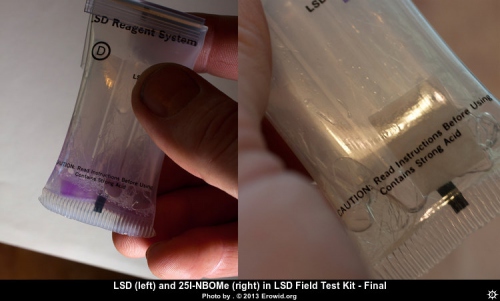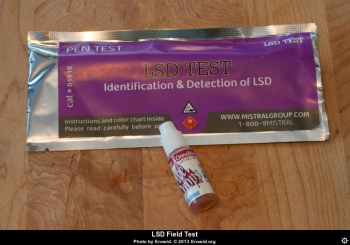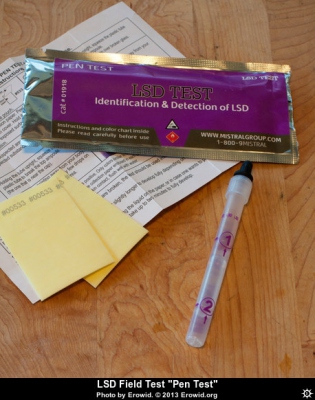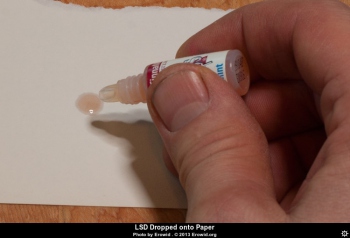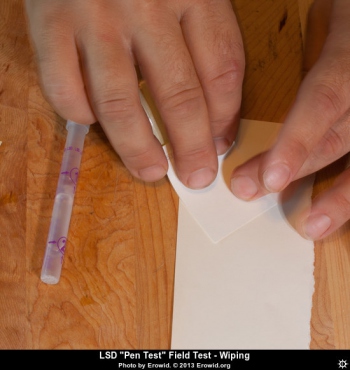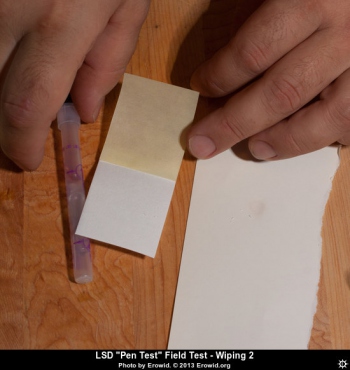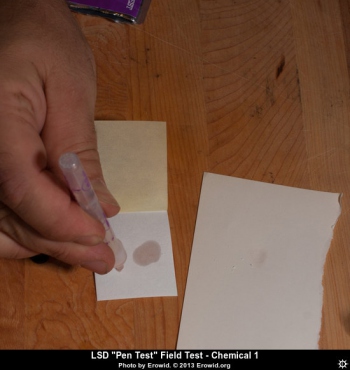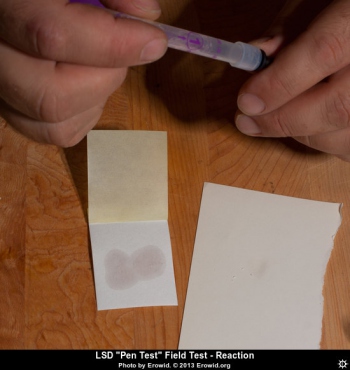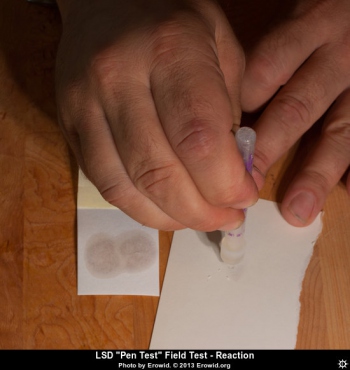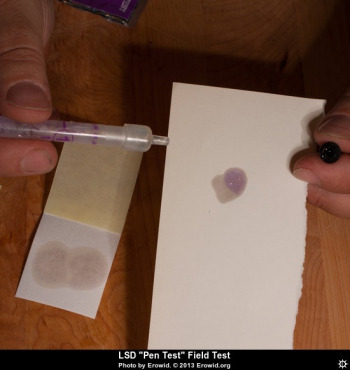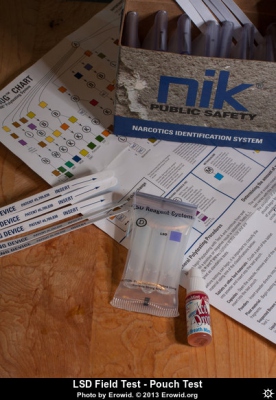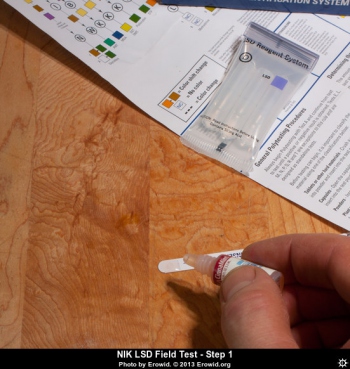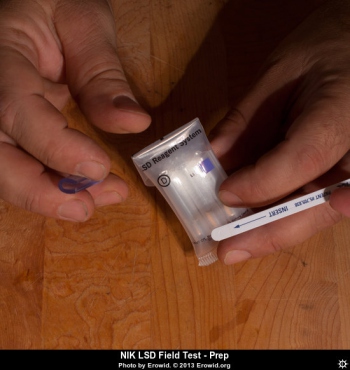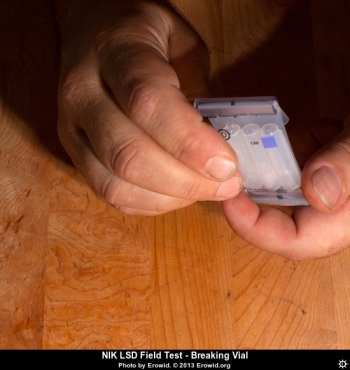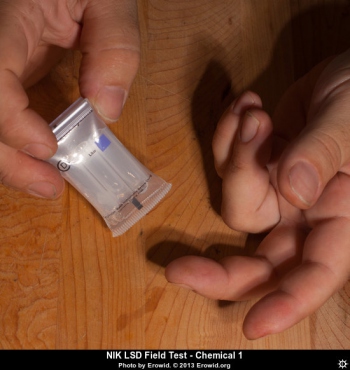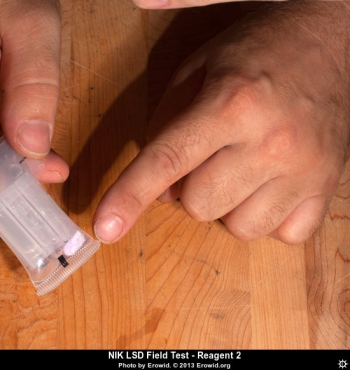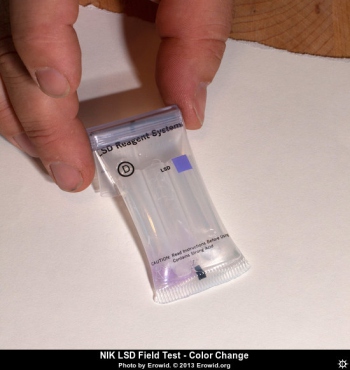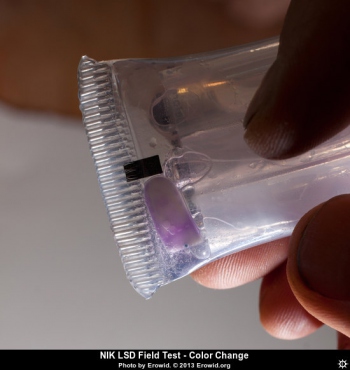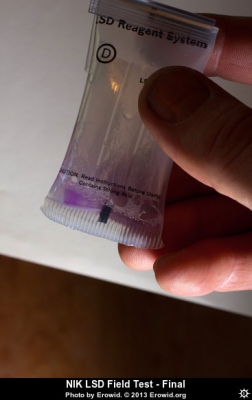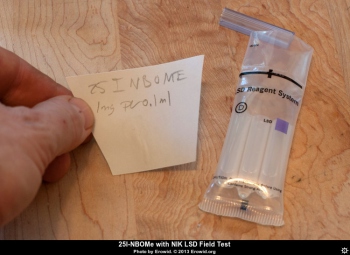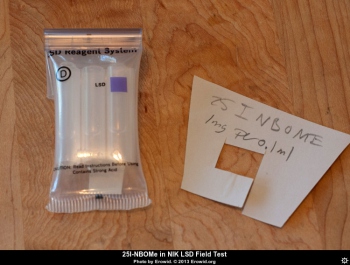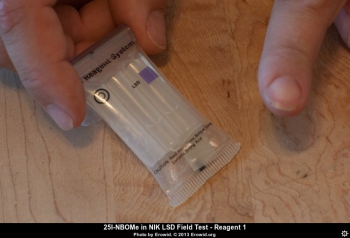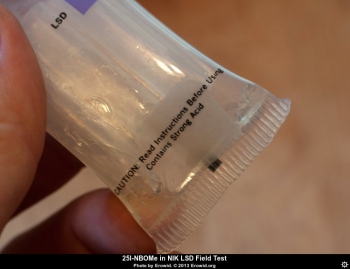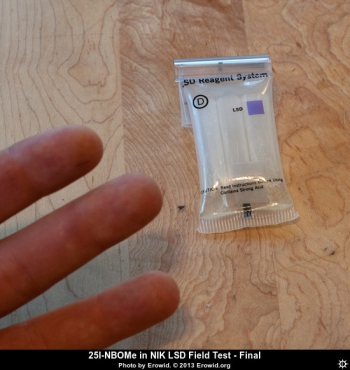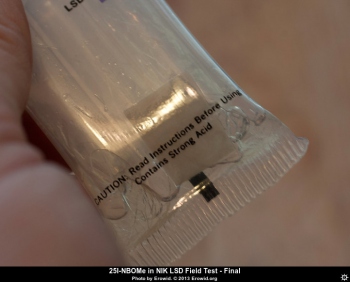LSD Field Tests Differentiate LSD from 25I-NBOMe
Sep 12, 2013
Citation: Erowid E, Erowid F. "LSD Field Tests Differentiate LSD from 25I-NBOMe". Erowid.org. Sep 12, 2013. Erowid.org/chemicals/lsd/lsd_testing3.shtml
While working on an article for the July issue of Erowid Extracts Spotlight on NBOMes: Potent Psychedelic Issues, we decided to look into whether LSD-detection field tests could be used to differentiate between LSD and NBOMEs. With NBOMe compounds being sold on blotter and sometimes being misrepresented as LSD ("acid"), we wanted to run LSD field tests against lab-verified 25I-NBOMe and confirmed LSD. After asking around, we were presented with the opportunity to meet someone who had both substances.
We first compared the two using a handheld UV lamp, with the results described in the article "LSD Glows under Ultraviolet (UV) Light". The results of that comparison were that LSD glows brightly under long- and short-wave ultraviolet light, while 25I-NBOMe does not. Though we did not have any other NBOMe compound to compare with, we believe based on the opinions of multiple analytical chemists that the results with other NBOMes would be the same: NBOMes don't glow under UV light.
The field tests we used were purchased from Amazon.com. They were "pouch" style NIK LSD Test Kit (D): "LSD Reagent System" and the LSD Residue Detection Test: Pen Test (shaped like a writing pen).
We first compared the two using a handheld UV lamp, with the results described in the article "LSD Glows under Ultraviolet (UV) Light". The results of that comparison were that LSD glows brightly under long- and short-wave ultraviolet light, while 25I-NBOMe does not. Though we did not have any other NBOMe compound to compare with, we believe based on the opinions of multiple analytical chemists that the results with other NBOMes would be the same: NBOMes don't glow under UV light.
The field tests we used were purchased from Amazon.com. They were "pouch" style NIK LSD Test Kit (D): "LSD Reagent System" and the LSD Residue Detection Test: Pen Test (shaped like a writing pen).
Executive Summary #
Both the pen test and the NIK pouch kit successfully changed color in the presence of LSD and did not change color when used on 25I-NBOMe. The pen test was faster to use, but following the pen test's "wipe" instructions failed to cause a change color even with known LSD.Step-by-Step Documentation of Using Field Tests on LSD and 25I-NBOMe #
LSD Field Test: Pen Test #
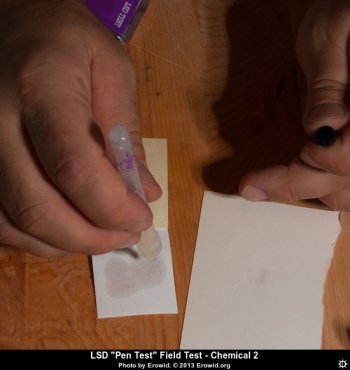
LSD "Pen Test" Field Test - Chemical 2
Photo by Erowid Step 3 is to break the second inner capsule inside the pen and drip the liquid onto the same putative spot of LSD.
|
NIK LSD Field Test: Pouch Test #
The pouch test includes three separate chemicals in isolated vials inside a single pouch. The instructions are surpisingly complicated, but the basic procedure is to drop the suspected LSD onto one of the included paper strips, then put the strip into the plastic pouch with the vials. Seal the plastic pouch, then break the interior vials one at a time, noting the reactions at each step. A positive test for LSD is one that turns the LSD-soaked paper purple after the second vial is broken but does not change additional color when the third vial is broken. We found this more effective than the pen test, though more complex. The total amount of toxic plastic waste from this kit was a little larger than with the pen test, but it kept the harsh chemicals contained in a sealed plastic pouch. For parents and law enforcement, that might be particularly valuable. For us, it meant more stuff we weren't entirely clear on how to environmentally dispose of after we were done with the test.
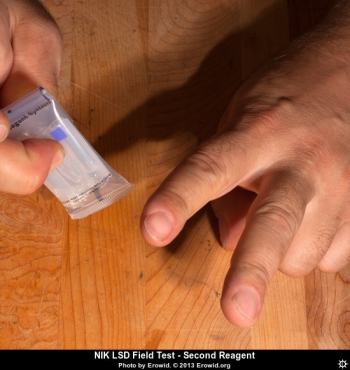
NIK LSD Field Test: Pouch Test - Second Reagent
Photo by Erowid Then the second vial is broken, releasing the second chemical reagent into the pouch.
|
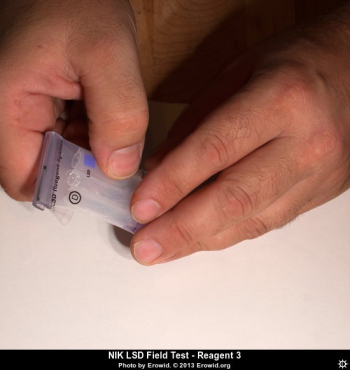
NIK LSD Field Test: Pouch Test - Third Reagent
Photo by Erowid Breaking the third chemical vial in the test pouch.
|
NIK LSD Field Test: Pouch Test with 25I-NBOMe #
Finally, we tried the NIK LSD Field Test kit with 25I-NBOMe that had been verified by lab testing. The 25I-NBOMe was put into a solution at a concentration of 1 mg per 0.1 ml, which should be similar in concentration to the liquid LSD we tested.


